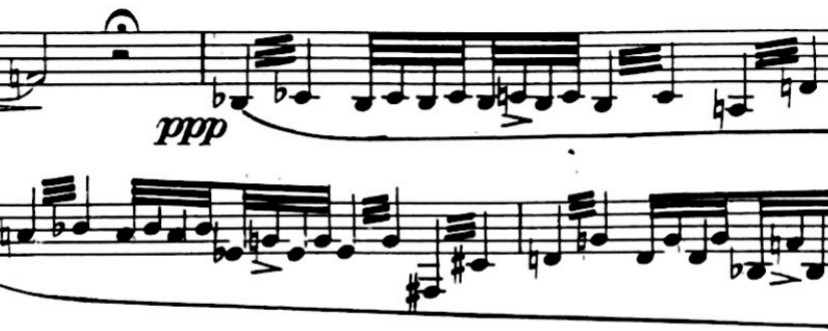Trill and Tremolo Tips for Clarinetists
Confession time: I’m not a big fan of trills and tremolos.
Something about seeing them brings me right back to middle school, when it was often a competition to see who could fit the most notes into the designated amount of time.
Thankfully, my technique today is much better than it was in middle school, and I’ve also developed a few tips to help make trills and tremolos easier and dare I say…fun?
First things first – what’s the difference between a trill and a tremolo?
A trill moves between two stepwise notes (half or whole steps), and a tremolo moves between any two notes (not stepwise).
Now that we’ve got that out of the way, let’s dive in!
Trill & Tremolo Tips
- Begin on the written note. Seems like a no-brainer, but sometimes our minds (and fingers) go into overdrive when they see a trill or tremolo. Starting on the indicated note will allow you to be more in control of the pacing than if you accidentally began on the note you’re moving to. (Note: During some periods of music history, it is common practice to begin the trill or tremolo on the note above. If you’re not sure, ask your teacher for clarification.)
- Explore all possible fingerings. If a trill or tremolo seems exceedingly difficult, there’s probably an alternate fingering. This isn’t always true (here’s to you, pesky G#-A clarion trill in Weber’s Concertino), and tuning should always be a consideration when choosing fingerings to use. Consult with a few fingering charts and ask your teacher to see if there are any alternative fingering options.
- Keep your fingers curved and relaxed. The more tense your fingers are, the slower they will be able to move.
- Keep your fingers close to the clarinet. Another obvious but often-neglected tip is to keep your fingers close to the clarinet. The further away from the clarinet your fingers move, the longer it will take for them to return to the keys. It might not sound like a big deal, but every millisecond adds up!
- Prioritize pacing over speed. Another common mistake I hear with students is trying to cram in as many notes as possible into each trill of tremolo. Remember that these are musical ornaments meant to highlight the style of music you’re playing. I like to begin trills/tremolos a bit slower and gradually speed up the pace, which makes trills and tremolos sound much more musical. (Bonus: This also allows you to warm up into the trill, making the technique much easier!)
- Don’t lose count. Just because your fingers are moving quickly doesn’t mean that you can stop counting. Be sure to count carefully and subdivide so you end up playing an endless trill/tremolo! (Counting is also important to factor in any grace notes or other ornaments – more on that below!)
- Keep the air moving. It’s easy to go into a slight panic mode when you encounter a nasty trill or tremolo, but make sure to support your technique with even more air for a smoother sound.
- Land on the written note. Just like it’s important to begin your trill/tremolo journey on the right foot…I mean note…it’s important to end up on the indicated note. This will make it much easier to transition to whatever follows the trill/tremolo, especially if it includes grace notes.
One final tip – place the grace (notes). If the trill/tremolo is followed by grace notes, make sure you leave yourself enough time so your tempo doesn’t drag. For example, if you have a half note trill/tremolo followed by two grace notes which lead into the next beat, you could consider playing the trill/tremolo as a dotted quarter, which would allow you an 8th note to place the grace notes.
If you want to develop smoother technique for trills and tremolos, my favorite book is the Jeanjean Vade-Mecum. The first exercise is a wonderful trill study, but the other exercises are also great for building better technique. (I love this book so much I even created the Vade-Mecum Boot Camp!)
Good luck, and happy practicing!
